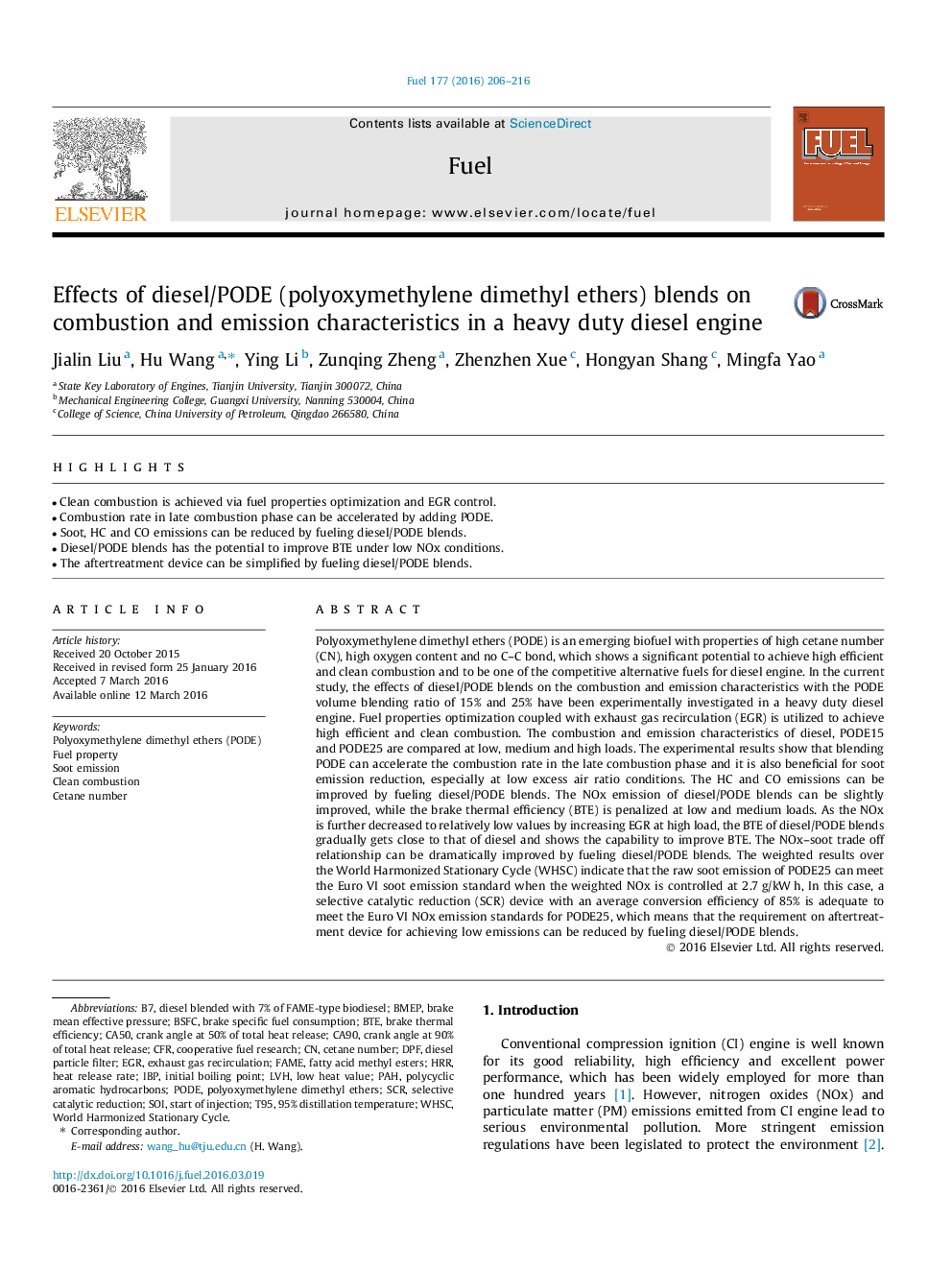| کد مقاله | کد نشریه | سال انتشار | مقاله انگلیسی | نسخه تمام متن |
|---|---|---|---|---|
| 205133 | 461097 | 2016 | 11 صفحه PDF | دانلود رایگان |

• Clean combustion is achieved via fuel properties optimization and EGR control.
• Combustion rate in late combustion phase can be accelerated by adding PODE.
• Soot, HC and CO emissions can be reduced by fueling diesel/PODE blends.
• Diesel/PODE blends has the potential to improve BTE under low NOx conditions.
• The aftertreatment device can be simplified by fueling diesel/PODE blends.
Polyoxymethylene dimethyl ethers (PODE) is an emerging biofuel with properties of high cetane number (CN), high oxygen content and no C–C bond, which shows a significant potential to achieve high efficient and clean combustion and to be one of the competitive alternative fuels for diesel engine. In the current study, the effects of diesel/PODE blends on the combustion and emission characteristics with the PODE volume blending ratio of 15% and 25% have been experimentally investigated in a heavy duty diesel engine. Fuel properties optimization coupled with exhaust gas recirculation (EGR) is utilized to achieve high efficient and clean combustion. The combustion and emission characteristics of diesel, PODE15 and PODE25 are compared at low, medium and high loads. The experimental results show that blending PODE can accelerate the combustion rate in the late combustion phase and it is also beneficial for soot emission reduction, especially at low excess air ratio conditions. The HC and CO emissions can be improved by fueling diesel/PODE blends. The NOx emission of diesel/PODE blends can be slightly improved, while the brake thermal efficiency (BTE) is penalized at low and medium loads. As the NOx is further decreased to relatively low values by increasing EGR at high load, the BTE of diesel/PODE blends gradually gets close to that of diesel and shows the capability to improve BTE. The NOx–soot trade off relationship can be dramatically improved by fueling diesel/PODE blends. The weighted results over the World Harmonized Stationary Cycle (WHSC) indicate that the raw soot emission of PODE25 can meet the Euro VI soot emission standard when the weighted NOx is controlled at 2.7 g/kW h, In this case, a selective catalytic reduction (SCR) device with an average conversion efficiency of 85% is adequate to meet the Euro VI NOx emission standards for PODE25, which means that the requirement on aftertreatment device for achieving low emissions can be reduced by fueling diesel/PODE blends.
Journal: Fuel - Volume 177, 1 August 2016, Pages 206–216